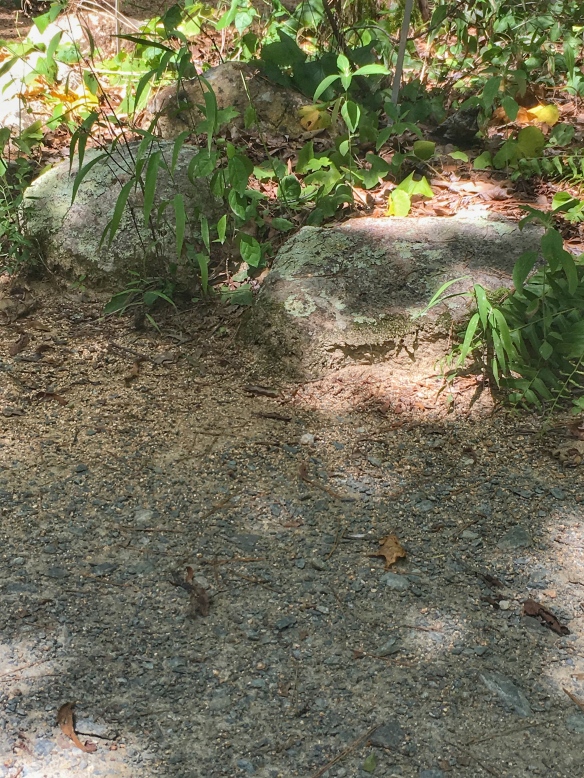Ants are everywhere, but only occasionally noticed. They run much of the terrestrial world as the premier soil turners, channelers of energy, dominatrices of the insect fauna…
~Bert Holldobler
The more I learn about them, the more I appreciate plants. Working at the NC Botanical Garden allows me to see the passage of time through the eyes of a variety of native plant species. I have witnessed slow, long-term seasonal changes, as well as brief glimpses of wonder. And so it was that last Friday when a coworker came in right before closing and showed me her phone video of ants dispersing the seeds of a trillium in the Herb Garden. It was amazing to see them carrying such a huge load across the rocks. I grabbed my camera and headed over, hoping I wasn’t too late.
I have seen this phenomenon, called myrmecochory (seed dispersal by ants), a few times before and reported on it in an earlier post. Estimates are that 30%-40% of our spring-blooming woodland flowers rely on ants for seed dispersal. Another source stated that elaiosomes occur in over 11,000 plant species! There are various theories as to why ants do this and how it benefits the seeds:
- the lipid-rich appendage is a food reward that is fed to the ant larvae when it is taken back to the nest
- the seed is dispersed away from the parent plant, which may provide a better growth environment by reducing parent-offspring or sibling competition
- by quickly transporting the seed to its nest, the ants’ behavior reduces the time the seed may be exposed to various seed predators (the seed might get eaten by a bird or mouse, for example)
- when the seed is discarded into the ant “trash pile”, it is in a nutrient-rich environment ideal for germination
In addition, one author speculates there may be some benefit from the anti-microbial properties within ant nests that will reduce the susceptibility of the seed to various pathogens.
Studies where a researcher has removed some of the elaiosomes and compared removal rates have shown that ants remove seeds with elaiosomes more quickly, often using the appendage as a handle.
But the most intriguing research I have seen focuses on the reason the ants pick up the seed in the first place. It seems that elaiosomes rich in oleic acid trigger a stereotyped carrying behavior in a variety of ants. E.O. Wilson, the dean of ant researchers, showed that a dead ant starts emitting oleic acid about 48 hours after its death. This is a signal to other ants to pick it up and carry it back to the nest and discard it. He even added a drop of the “dead ant” acid to a live ant, which was quickly picked up and carried to the trash pile, in spite of its thrashing and obviously living qualities. To quote an NPR story on this experiment, Dead is what you smell — not what you see — if you are an ant. So, do plants mimic an insect chemical in order to get ants to carry out their seed dispersal tasks? It appears there may also be some benefit to the ants in this relationship, but the origins of this behavior are fascinating to ponder.
Below is a series of images depicting about 45 minutes in the long life story of one wildflower – a plant that may take 2 years for its seed to germinate, and then another 5 or 6 years to flower and produce its first seed. And, it seems to have figured out a way to con a bunch of insects (yellow jackets are also known to disperse seed with elaiosomes) to carry its seeds back to their trash pile. There appears to be a lot going on out there in the woods that we are just beginning to understand. All the more reason to plant some native plants and get outside and observe your wild neighbors.

The source of the seeds – Little Sweet Betsy, Trillium cuneatum (this photo was taken in another location in the garden back on March)

This is how the Trillium that provided the seeds looks now (this photo was taken a couple of days after the ant dispersal images and the seed pod has now disappeared)











